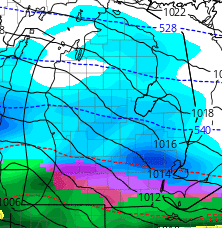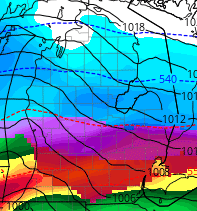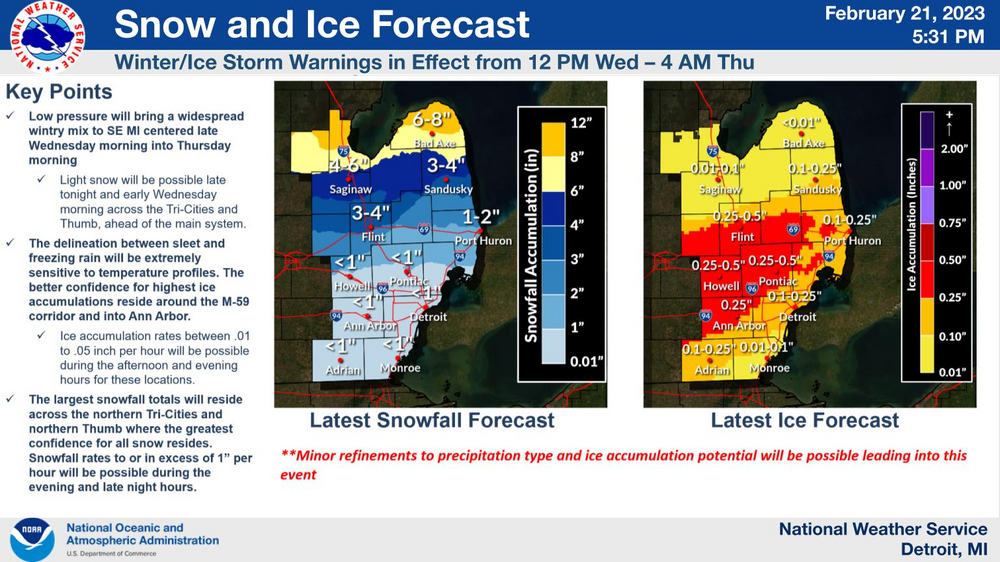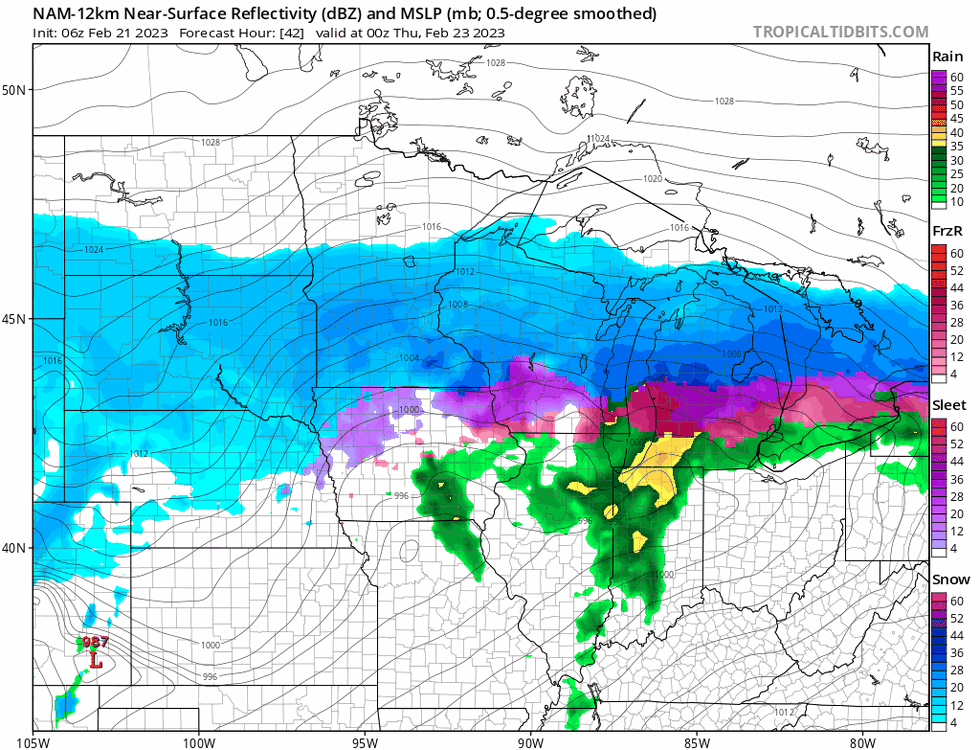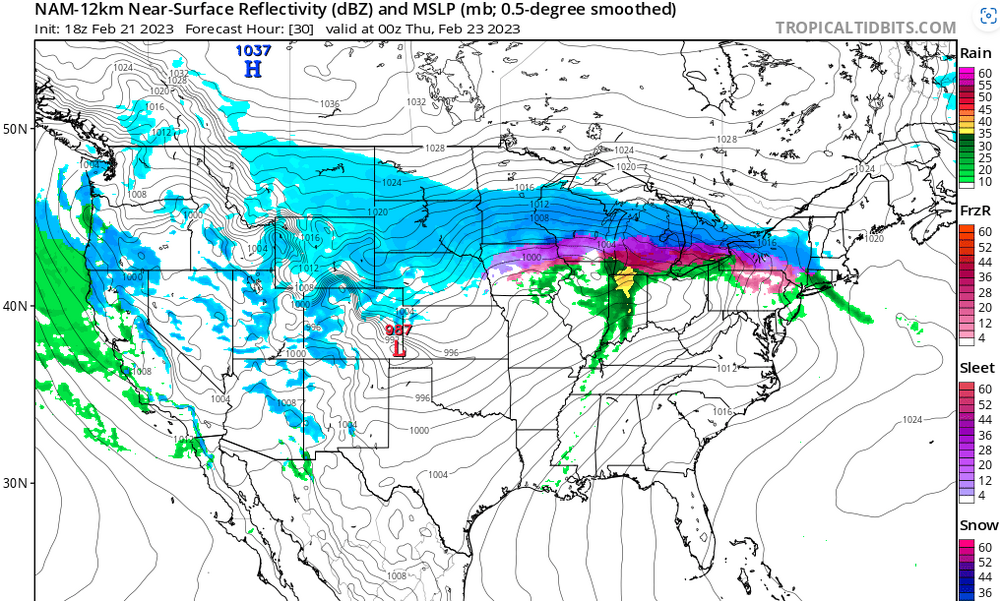-
Posts
2,513 -
Joined
-
Last visited
Content Type
Profiles
Blogs
Forums
American Weather
Media Demo
Store
Gallery
Everything posted by RogueWaves
-
DTX: With the current outgoing forecast out of the way will offer to insight in a potential deviation point as this gets into the latest model trends and ramifications we`re watching. Hi-res runs this past evening and tonight from the HRRR/RAP to NAM Nest (and to a lesser magnitude the NAM12) are having a harder time lifting the frontal slope into the area resulting into a shallower elevated warm nose over the I-69/M-59 corridors, increasing sleet probabilities. If this scenario pans outs, there would be a southward shift in primary freezing rain axis towards the I-96/94 corridors... which as a sidenote would be more in line with what the GFS and Canadian-NH have been advertising. In addition, this would limit the chances to switch to all rain over the far southern CWA instead remaining wintry mix/freezing rain and increasing icing... which could warrant a need for an upgrade of some or all of the advisory counties to an ice storm warning. Areas of additional concern/uncertainties are the effect of the still open waters of Lake Huron sitting firmly in the mid to upper 30s, degree of latent heat release from higher rainfall rates (or conversely any wet bulb cooling given dewpoints in the 20s), and the effect on ice accretion efficiency given the moderate precip rates. Unfortunately these three points remain fairly nebulous and really won`t be known until the event actually begins. So basically, they won't know until it is already a done deal. Perfect for that office. They can then bump headlines.
-
-
I think they're right. The only good thing is temps are expected to get way above freezing Thursday. Doesn't stop the damage during the event, but it's better than just plunging into the deep freeze as so often happens.
-
APX snippet. Wish I could just phone work and stay up here, lol. If we do manage to get the stronger gusts as guidance suggests...in combination with the potential for intense snowfall Wednesday night...not out of the question visibilities could drop to 1/4 mi or less...which would put us pretty close to blizzard conditions at times overnight. Additional concern with the winds is that if we are able to get into the ice at all...suspect winds will be efficient at helping ice accumulate on surfaces.
-
Which one?
-
That's the closest true mega-storm I can think of. Would need some confirmation on west half of Yoopland. I know the eastern UP got under headlines for sure.
-
Our great winter of 22-23. Highly regarded for mega-storms top to bottom!
-
Can anyone name a storm that had more counties of MI in a winter headline??
-
Gotta expect some bumps with the overnight issuance. I don't have a good feel for how robust the grid is since I'm new there and the wx has been mostly a snooze-fest in every season. Marshall was pretty robust with their own power generation system. It took a lot of trees coming down to be in the dark (May 2011 near twister, 11-13-17 severe). I have no benchmark. All I know is if my wife and pets are sitting in the dark unheated apartment, that'd be a bad thing. At least with the place in Marshall we could fire up a couple burners on the gas stove for a little bit of heat. Did that more than once. No such option now.
-
So technically, DTX's icing map actually already has the far NW corner of Wayne (aka mby) in the same shading as those to my SW in the ISW. Not liking this at all.
-
Explains why I didn't remember April of 2018. Apparently south (Marshall) was spared.
-
I drove through the tree in Albion. The same morning a Marshall fireman did the same thing north of Marshall and was killed.
-
I edited my post to say the last bad one I remember for Calhoun was Dec of 2006. There were one or two more in early '07 and a minor one during the mid-Feb 2011 storm. Dec '06 could've cost me my life as I drove my car straight through a massive tree downed across the entire road in the dark.
-
Overnight read from DTX should be kinda interesting.
-
@ euro
-
Maybe not for Calhoun. Remember, we dodged a major bullet with the Dec 2013 ice storm. Might be time to pay for that. Dec '06 almost took me out (nearly totalled my ride). That's the last bad one I remember for Calhoun.
-
-
-
Uggh. All the latest maps are concerning to say the least. I am far NW Wayne, so if there is one spot of the county that could lean warning, that would be the place. Last week's storm trended just far enough south to get us a nice tree glazing and some icy car tops. This following the same trend.
-
1800's: "Fluke..I am your father!"
-
82-83 was my first experience with strong Nino's. I remember MSP just getting slammed non-stop (actually it was Denver to MSP). Which is kinda weird since strong Nino's are supposed to be "warm and DRY" for the Norther tier. SEMI was chucked a bone on the first day of spring with a dbl digit storm for KFNT and mby.
-
And you've got some hills in AA
-
Unless DTX's current forecast is a bust (in an icy way), it looks like cozy Wayne will allow me to escape the dreaded power outages that look immenent beginning just to my west (Washtenaw) and back your way along 94. Meanwhile, expecting 2-3" here by morning, then snow continues all day.
-
If DTW and Wyandotte had my numbers (in red) you wouldn't be quite so chipper. And this year isn't going any where, sorry. Doubtful I hit 20"
-
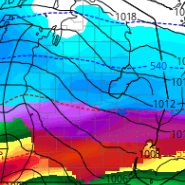
Winter 2022/23 Medium/Long Range Discussion
RogueWaves replied to Chicago Storm's topic in Lakes/Ohio Valley
He just needs to give it up. More winter isn't happening this year for the ORD->DTW corridor. But he doesn't want spring either.


